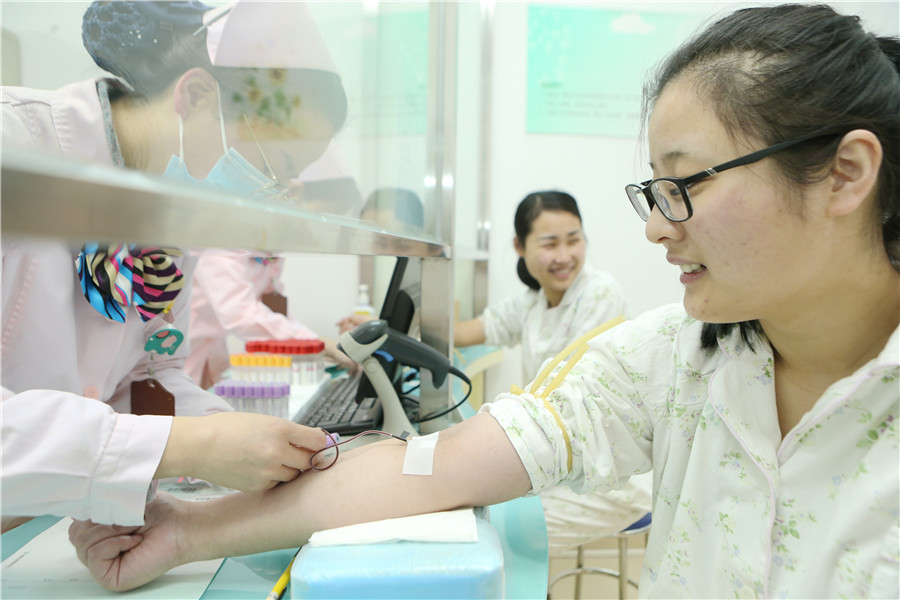Physical examination market moves into top gear as demand surges


China's physical examination market is expected to reach 465 billion yuan ($68.6 billion) by 2022, up 55.83 percent from the level in 2018, thanks to the public's growing healthcare awareness, the increasing morbidity of chronic diseases and the willingness of more employers to offer such services, said a recent report.
The report, released by Beijing-based market consultancy Analysys, forecasts that the country's physical examination market in 2018 could be 298.5 billion yuan, up 12.2 percent year-on-year. Physical examination visits also surged by 4.95 percent year-on-year to 526 million.
Statistics from the Ministry of Human Resources and Social Security showed that from 2012 to 2017, the country's healthcare insurance expenditure almost tripled, and the annual growth rate reached 21.07 percent, much higher than the GDP growth rate. Expenditure on healthcare insurance also showed a solid growth trend.
"Increasing preventive inputs and strengthened healthcare management are necessary for controlling medical expenses and relieving healthcare insurance pressures," said Chen Qiaoshan, a medical analyst at Analysys.
According to the National Health Commission, both the ratio of healthcare expenditure to GDP and residents' healthcare literacy have been steadily growing.
"As healthcare expenditure grows, residents are becoming more concerned about their personal health status, and are more willing to pay for preventive healthcare. However, compared to developed countries, China's physical examination coverage is relatively low. As the country increases its healthcare input and the public's healthcare awareness grows, more people will accept physical examinations, and the gap with developed countries will be eliminated within five to 10 years," Chen said.
The growing morbidity of chronic diseases has also boosted the physical examination market. Data from the NHC showed that from 2013 to 2017, the average age of cancer patients dropped by 0.78 year, while that of diabetes patients decreased by 0.5 year.
"Emphasis on chronic diseases and public awareness is not enough. Popularization of physical examinations and the maturity of screening technologies are necessary for prevention and control of chronic diseases," Chen said.
Physical examinations are also increasing due to the health checkups offered by many employers. This not only eases the healthcare burden of the employee, but also relieves work pressure, and increases life quality, while for enterprises, it improves loyalty and increases work efficiency.
According to a report from Analysys, physical examinations are multitiered now to satisfy customer requirements. As people's age, gender, lifestyle and history vary, they need to apply for specified tests. For example, a customer with a family history of lung cancer should include a chest CT scan, while those over 50 years old should select tumor screening.
With current physical examination equipment getting updated frequently, the test results are becoming more accurate, the report said. "Advanced technologies and equipment effectively improve the accuracy of physical examinations," Chen said.
In addition, in the digital era, physical examination apps run throughout the whole test process, so that the user experience is enhanced. Physical examination apps can make a reservation before tests, offer guidance during tests, and present reports and guidance after tests. Data from Analysys showed that in 2018, the average monthly active users of physical examination apps reached 4.31 million, and in May 2018 hit a record 4.87 million.
Li Xue, a doctor who used to work in a public physical examination institution, said the market demand for such services is huge.
Market insiders said that the physical examination market in China has become relatively saturated in the past three years, and competition is getting fiercer in first and second-tier cities. However, the physical examination market in most regions continues to be influenced by factors like market maturity, patient demand and affordability.
"In addition, the physical examination industry is closely related to government policies. Driven by the implementation of the universal second-child policy, maternity and parent-child examinations are booming," they added.
Zhang Hanzhi contributed to the story.




































